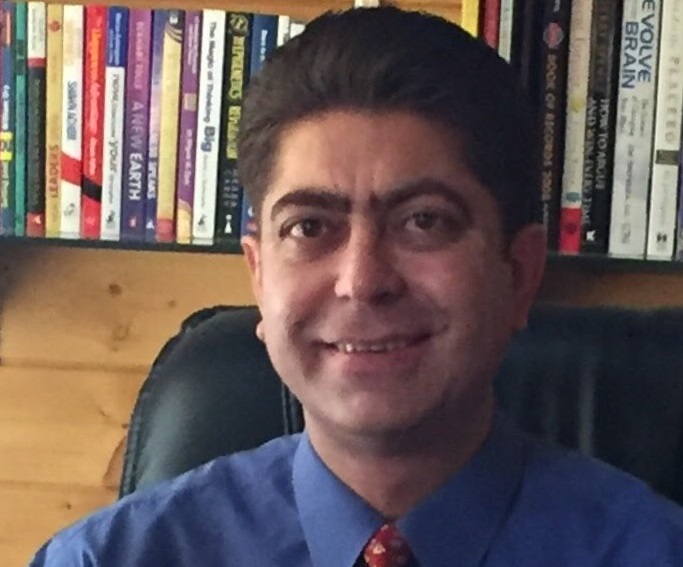In this comprehensive interview with Kashmir Newsline, noted surgical oncologist Dr. Qazi Ashraf talks about cancer, its multiple manifestations, causes and preventive measures.
There has been an alarming rise in cancer cases in Kashmir. According to the data released by SKIMS, the first quarter of 2022 recorded 1110 cases, which is quite high compared to the year 2021. What do you think is the reason? Is this data alarming?
Yes, it’s alarming. However, we need to look at this trend holistically. There are many factors that we have to take into consideration before we interpret this data. First of all, during the last two years, people were restrained from coming out because of the pandemic. However, after the pandemic was over people started coming out from their homes. So there was a sudden rush of people to the hospitals and that’s why there is this surge in data. Second factor is the population. We need to see the data in the backdrop of population growth which is increasing. If we look at the census of 2011 and compare it with 2018, 2019, 2020, the population in Jammu and Kashmir has increased by 8.25%. Accordingly, the birth rate should have increased but the trend is negative. Before 2014, it was about 20.6, which means a 5% birth rate decrease. It means the population pyramid has flattened from the top which means that the elderly people or those who are more than 50 years obviously have more chances of cancer since life expectancy has increased proportionately with population. It is not that the population is decreasing or the cancer is proportionately increasing. Therefore, the data that has come out is raw and it’s too early to say anything about it.
In the rural areas also, the cancer cases are on a rise. What are the precautions one should take to minimize the risk?
There are many factors that have to be taken into account to prevent cancer. Our eating habits have to be corrected, for example, nun chai (the traditional Kashmiri salt tea) is definitely not good for our stomach. It’s an over-boiled concoction of salt and soda and during that process, toxic substances are released that affect our digestive tract. Fifty years or so back, milk wasn’t much consumed. According to a new study, the use of too much milk is not good for the human body. According to one of the studies, women who drank milk daily were seen to be affected with breast cancer.
Apart from our eating habits, we need to change the overall system that not only includes cutting down on smoking but pollution also. We think it is smoking alone that leads to cancer. Had it been so, then in a country like America, where smoking has been significantly brought down, cancer shouldn’t have been on a rise. We talk less about pollution which is the main cause of cancer. The smoke coming out of vehicles that run on diesel. Our roads are not macadamized. Construction patterns are wrong as proper ventilation and the direction of sunlight is not followed. The use of polythene that releases harmful nitrous travels to our food. In short, there are so many reasons for the increase in the number of cancer cases.
In villages also, we have primary detection centers, but the most important thing is mass debates and awareness among our folks. Educated people have to come forward and run awareness campaigns to educate people about the disease.
Is hereditary factor responsible for the growth of cancer cases?
Our body undergoes changes after every seven days. Old cells come out through sweat, et cetera, while new ones are formed. In this process, an error called mutation happens. If such a cell gets an environment that propagates, it forms in 5 to 10 years a tumor that develops and leads to cancer in 85% to 87% of the cases. However in 12% of the cases, the hereditary (factor) is involved which is in very few cases called gene pattern. Mutational error can happen at the time when a child is in the womb called DNA abnormality or chromosomal abnormality, or gene abnormality. If it happens then it carries on in the family. One out of four children in a family may carry this disease. If it is dominant, then all those children die in the first one or two years. It can happen in 10–12 % of the population. However, treatment, prevention or genetic modification are much more likely to handle such issues compared to the damages that pollution can inflict.
What are the preventive measures against cancer?
People should take consultation from experts and only consult relevant doctors and avoid self-medication. Self-awareness is more important.
How can we remain vigilant against susceptibility to the disease?
There are two things: genetics or hereditary cancers or familial cancer, and sporadic cancer. Hereditary cancers are easy to prevent and relatively easy to detect nowadays because of instruments and investigations we have. We can pick them and then treat them with prophylactic surgery or prophylactic chemo in early stages and the results are good. However, at the later stages, effects are very low.
While as in sporadic cancer, the majority think hi-fi infrastructure is required to detect this cancer. It is not like that, for example, self-examination for a woman to detect early breast cancer can have good results of treating the disease. People with breast cancer come at a late stage. However, awareness is improving. Another example is the detection of intestinal cancers, which can be done through a simple stool test. We do not require huge infrastructure. Small measures can help to keep cancer at bay and among them awareness is the best. It’s not difficult to prevent cancers. Our aim should be to not let it happen and if it happens, then early detection. People have misconceptions about cancer. They should talk to experts and small measures can help to prevent it.
In Kashmir, we see kangri cancer very common. How and why can a kangri can lead to cancer?
Cancer is not an epidemic like COVID19. It takes time to form but once it develops, it spreads fast. People who use kangri (an earthen firepot used to stay warm during winters) will not necessarily get cancer instantly. Over a period of time, people who have been using kangri from years together, from their childhood, persistently, with high temperature can be prone to cancer after sometime. There was a period from 2000 to 2016 when kangri cancer cases in Kashmir were rarely reported, almost negligible, just one or two cases. Every kangri doesn’t give cancer, but if it has high temperature and it forms spots or patches around hands that means its temperature is too high for our body and it has more chances of forming cancers.
What if a patch has developed, any remedy to cure it?
If a patch has developed, show it to a doctor. It has grades and normal patch heals itself. Then there are patches that have roughness or itchiness. Some patches need biopsy, some scrapping. If the patch develops, seek expert consultation, keep kangri at a distance and don’t wear tight clothing.
What are the symptoms of colorectal cancers?
Symptoms means disease. For example, blood in stool, weight loss and abdominal pain means a full-blown disease. Early detection through stool test, primary prophylaxis tests, sigmoidoscopy test and colonoscopy can keep a person vigilant about the disease.
What are benign tumors and malignant tumors, how do we identify them?
Benign and malignant tumors can be detected by doctors only through tests like biopsy or FNAC (Fine Needle Aspiration Cytology). Appearance of moles on skin mostly means they are benign, some of them have been there since childhood and they mostly change over a period of time while some transform and change into melanoma or malignancy. If there are scars that don’t heal or moles that increase in size proportionately or have itching or bleeding or are giving discomfort, it should be immediately shown to a doctor and get tested. The biopsy is an efficient way to get it checked and most of such tumors that have just started in biopsy are treated right there.
Is it true that lung cancer cases have increased in Srinagar? What preventive measures should be taken?
Earlier, incidence of lung cancer was predominant. People would die of this disease but one would never come to know the reason for the death of that person. However, today, because of advanced technologies, like PET scan, reporting is quite high. We now have more detections because of modern technologies. The good part is that we should see this figure in terms of population. After surgery, in case one lung has been removed obviously more precaution has to be taken. Such patients have to take proper flu shots before the arrival of flu season followed by physiotherapy of the lung that can gradually increase the stamina. Eventually, such patients start adapting to the change and manage very well.
You have spent a long time in America, you have written many books and researched a lot. Tell us about your findings particularly related to behavioral patterns and medicines.
My first research was on breast cancer and I did this research for three years. It got acceptance in the West. I worked on a protein expression that was acknowledged. Based on this, my first book was published by the National Library of Germany and is in its database. Then I wrote many more books. I wrote a book on psychological aspects of the human mindset. In this I have written how mindset can affect our body and boost our health.
In surgical oncology, I worked on head, neck, breast, and rectum cancer research. One of my research on neck remained at top 20 for five consecutive months. It was a record. It is here that my research was included as a reference in guidelines of American Society of Radiology (ASR) in 2020. I am trying to do my bit and serve the society and make best use of my skills here.
(Compiled by Zia Darakhshan.)


